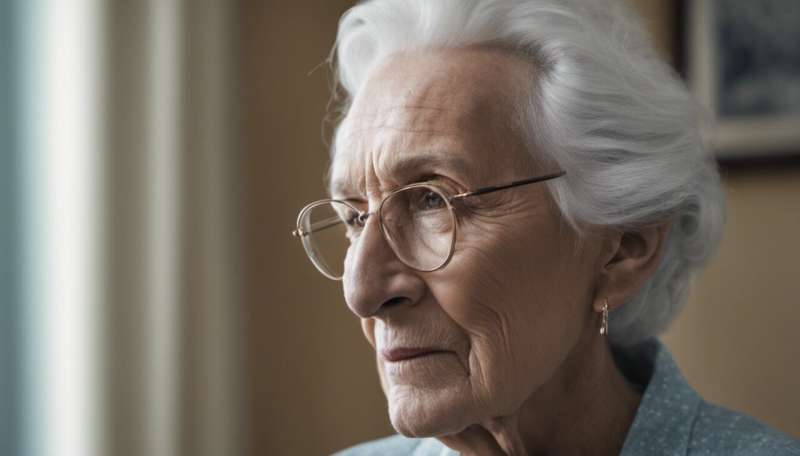Dementia makes it hard to detect pain in new nursing home residents

An assessment tool can make it easier for healthcare professionals to identify pain in residents with dementia. The right treatment can improve residents' quality of life.
We know very little about the incidence of pain among the elderly in nursing homes. Norway does not have a requirement in place for pain to be assessed before or during nursing home admission, nor once a person has been admitted.
In some countries, the absence of pain is seen as an indicator of the quality of care and treatment that the nursing home is providing to its residents. Can Norway achieve this as well?
Assessing whether—or where and to what extent—a resident is in pain can be especially challenging among the elderly with dementia. Individuals with severe dementia often find it difficult to express themselves verbally about their condition.
Instead, nurses and health professionals need to observe the resident and look for signs of pain. Such signs might include painful sounds, exclamations, facial expressions like grimacing or the resident reacting by trying to avoid touch and movement.
Our research team has developed a pain assessment tool based on observation that can be used for all stages of dementia. Using this tool, we wanted to study the incidence and severity of pain among the elderly with dementia who are admitted to Norwegian nursing homes.
We found that 36 percent of the almost one thousand (953) elderly people with dementia who were examined after hospitalization had pain that fundamentally affected their everyday life. In other words, the incidence of pain is high.
Both residents who were already on painkillers and those who were not experienced pain of this nature. About half of all the residents were on one or more types of painkillers.
Other non-pharmacological pain relief therapies, such as cognitive behavioral therapy, exercise, massage, pressure relief and environmental music therapy, were not investigated in this study.
Pain has a negative effect on residents' quality of life, and intense pain can reduce their quality of life even more. Lack of pain treatment can lead to aggression and restlessness, but also apathy, mood disorders and more.
Detecting pain in residents with dementia serves as a necessary first step to determine appropriate medication or non-drug therapies for the pain. Such measures will increase the quality of care and treatment and in turn improve the quality of life of nursing home residents.
Regularly assessing pain in residents should be considered a requirement for operating nursing homes and an integral part of the quality assessment. In Norway today, a large proportion of nursing home residents have dementia, with percentages as high as 85 percent. The incidence and severity of dementia have increased among nursing home residents over the last 20 years.
The use of an assessment tool based on observing signs of pain in people with moderate and severe dementia is timely. This tool offers healthcare professionals a better basis for providing both pharmacological and non-pharmacological therapies for pain.
Treatment of pain in the elderly with dementia is challenging, and the first choice should be non-pharmacological treatment, possibly combined with painkillers.
Introducing regular pain assessment and protocols for treatment, as well as drug reviews that shed light on pain and pain-reducing measures for this group of the elderly, is important in order to reduce the incidence and severity of pain in the residents. Assessing and treating this population group requires competence, resources and continuity in their care and treatment.
More information: Anne-Sofie Helvik et al, Pain in nursing home residents with dementia and its association to quality of life, Aging & Mental Health (2021). DOI: 10.1080/13607863.2021.1947968




















